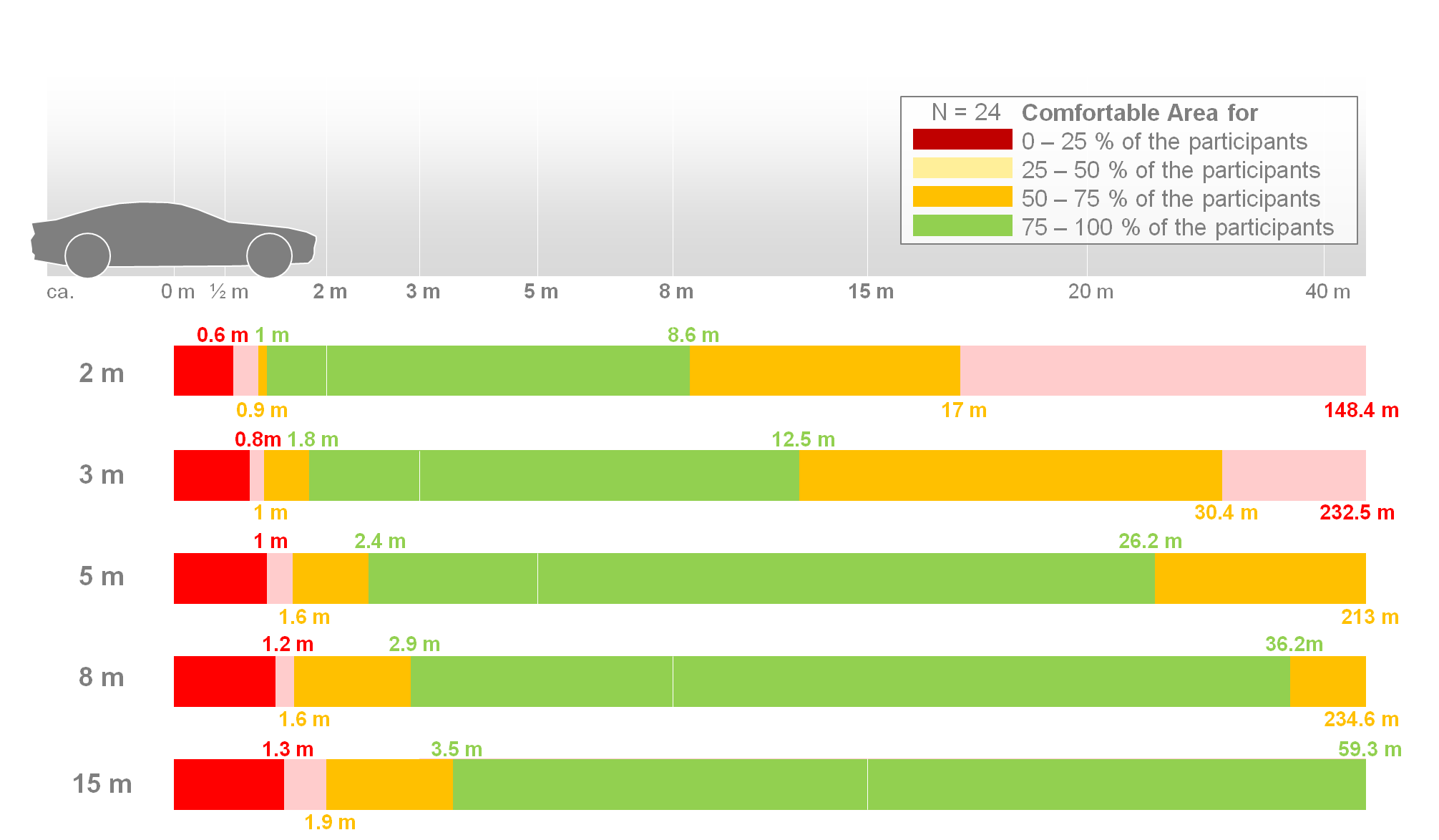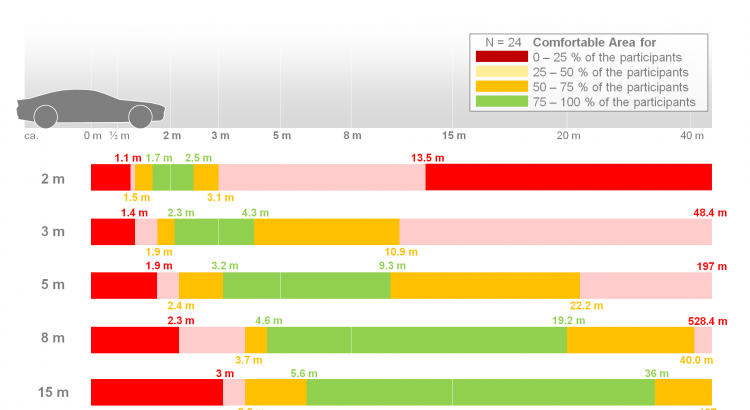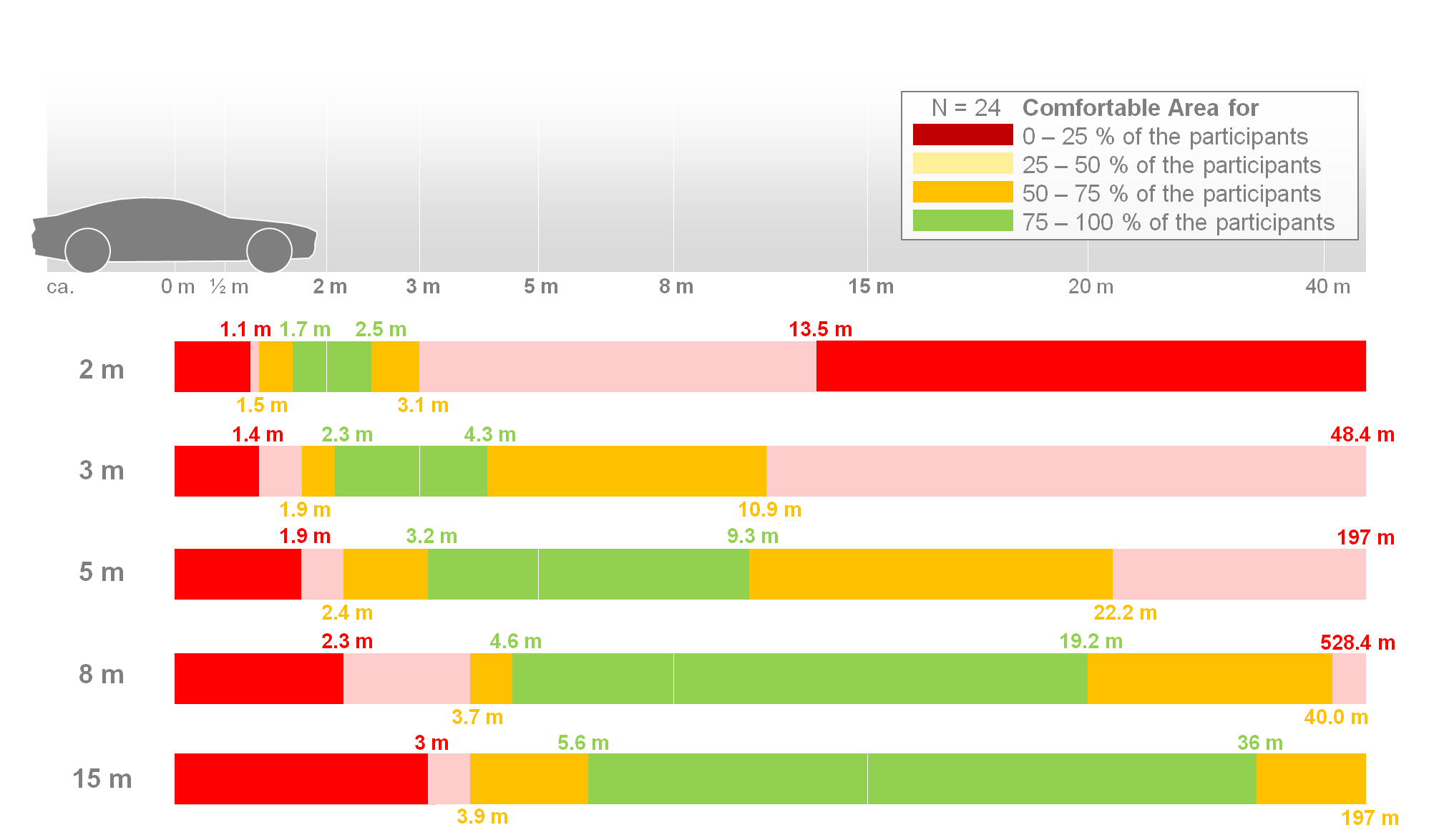Today, head-up displays (HUDs) are commonly used in cars to show basic driving information in the visual field of the viewer. This allows information to be perceived in a quick and easy to understand manner. With advances in technology, HUDs will allow richer information to be conveyed to the driver by exploiting the third dimension. We envision a stereoscopic HUD for displaying content in 3D space. This requires an understanding of how parallaxes impact the user’s performance and comfort, which is the focus of this work. In two user studies, involving 49 participants, we (a) gather insights into how projection distances and stereoscopic visualizations influence the comfort zone and (b) the depth judgment of the user. The results show that with larger projection distances both the comfort zone and the minimum comfortable viewing distance increase. Higher distances between the viewer and a real world object to be judged decrease the judgment accuracy.
Here you can find the data collected during the comfort zone study. We found that
the comfort zone increases for higher virtual screen distances. This picture shows the comfort zones for using more than one depth layer:
This picture shows that the comfort zone increases when just one depth layer is present:

For further information have a look at:
Nora Broy, Simone Hoeckh, Annette Frederiksen, Michael Gilowski, Felix Eichhorn, Felix Naser, Horst Jung, Julia Niemann, Martin Schell, Albrecht Schmidt, Florian Alt. Exploring Design Parameters for a 3D Head-Up Display. In Proceedings of the 3rd ACM International Symposium on Pervasive Displays. Copenhagen, Denmark, June 3-4, 2014. ACM, New York, NY, USA.

